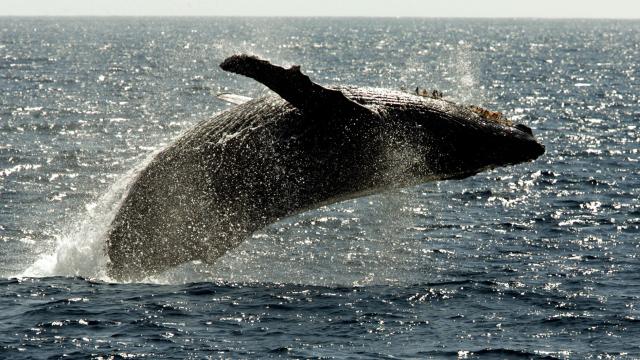It sounds like something out of a children’s animated film: the whale and the seal, at first put off by their differences, team up and become best friends. It’s like The Fox and the Hound but maybe less depressing?
Killer whales and humpback whales aren’t on the best terms. Image: Flip Nicklin/Minden Pictures.
There have been instances of humpback whales coming to the aid of seals being attacked by killer whales and scientists are baffled. Inter-species altruism is adorable when it’s framed as a “cute animal friends” special on Animal Planet, but in the wild, it’s rare. Even so, there have been multiple sightings of humpback whales getting into fights with killer whales when there’s a seal present, making it seem like they’re actually protecting the seal.
In a paper published in Marine Mammal Science, scientists looked at 115 recorded encounters between killer whales and humpback whales, to see if there was a pattern concerning the latter’s tendency to engage in fights with the former. While not definite proof, the team, led by National Oceanic and Atmospheric Administration (NOAA) scientist Robert Pitman, found that it could be traced back to a parent’s willingness to protect her young.
Recently, there have been more reports of killer whales attacking humpback calves, causing mothers to spring into action pushing their children into shallower water or putting them on their backs for safety. Scientists chalk the increasing attacks up to calves being a “predictable, plentiful, and readily taken prey source” in the summer months, but that in turn can lead to more fights.
Because of their size, humpback whales don’t have to worry about predators, including killer whales, and will come to the rescue when another is attacked (since this species goes to the same breeding grounds every year, they’re very likely to run into relatives along their route). It also means that killer whales pose one of the biggest threats to their species. Therefore, because of the threat that killer whales pose to their young, it seems like humpback whales will just attack the other.
And in many cases, it was the humpback whale that approached the killer whale already engaged in a fight. And sometimes, it just happened that another animal, like a seal, was there.
“I think they just have a simple rule,” Pitman said. “When you hear a killer whale attack, go break it up.”
Scientists don’t think the act of rescuing other animals is intentional (it’s not like the seal is going to reciprocate), but in nearly 90 per cent of attacks where the killer whales’ prey could be identified, it happened to be another species that as protected.
“Although reciprocity or kin selection might explain communal defence of con-specific calves, there was no apparent benefit to humpbacks continuing to interfere when other species were being attacked,” researchers stated in the report. “Inter-specific altruism, even if unintentional, could not be ruled out.”
